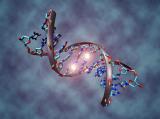
08/09/2015
De novo genes: starting to solve the mystery of their origins
A new collaboration amongst scientists at different centres at the PRBB, with Mar Albà from the Evolutionary Genomics Group of GRIB (IMIM-UPF) as leading author, has come up with a new mechanism for explaining the formation of de novo genes. Although commonly new genes arise by gene duplication and diversification of the copy, some genes appear in genomic regions which did not previously contain any gene, as compared with other species. How do these genes originate from nothing?
On this publication the authors propose – based on transcriptomic comparisons between humans and three other mammals – that first new regulatory motifs/promoters appeared in those regions, which lead to an activation of transcription and the origin of new potentially functional genes. Alba’s group have actually identified hundreds of putative de novo genes in the human genome.
You can read more about this in the Evolutionary Genomics’ group blog in this and this post, where they also point out to an interesting overview on the history of de novo genes, by Emily Singer.
Pub reference (Dec 2015): Ruiz-Orera J, Hernandez-Rodriguez J, Chiva C, Sabidó E, Kondova I, Bontrop R, Marqués-Bonet T, Alba MM. Origins of De Novo Genes in Human and Chimpanzee. PLoS Genet, 2015; 11(12)



